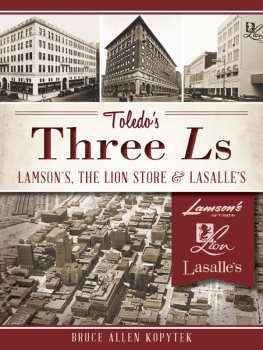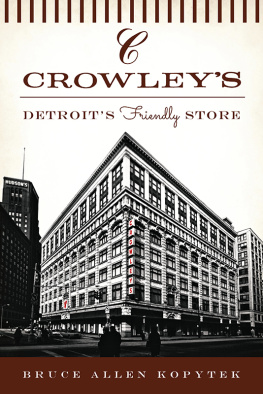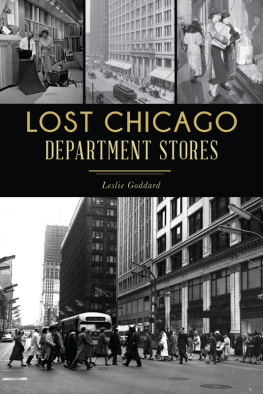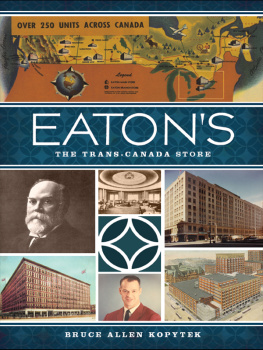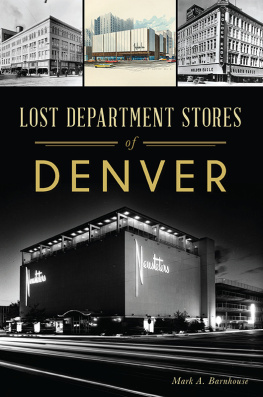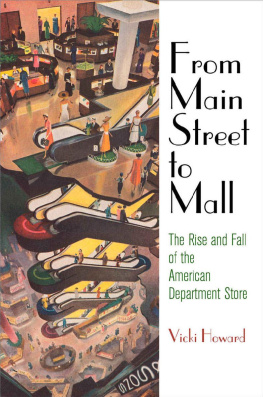
Published by The History Press
Charleston, SC 29403
www.historypress.net
Copyright 2013 by Bruce Kopytek
All rights reserved
First published 2013
e-book edition 2013
Manufactured in the United States
ISBN 978.1.61423.942.0
Library of Congress CIP data applied for.
print edition ISBN 978.1.60949.758.3
Notice: The information in this book is true and complete to the best of our knowledge. It is offered without guarantee on the part of the author or The History Press. The author and The History Press disclaim all liability in connection with the use of this book.
All rights reserved. No part of this book may be reproduced or transmitted in any form whatsoever without prior written permission from the publisher except in the case of brief quotations embodied in critical articles and reviews.
To the late Sylvania Franciscans Sister Mary Leontius
Zawistowski and Sister Mary Marcelline Drewniak,
superlative educators and the dearest of friends.

As Toledo Grew, So Grew Lasalle & Kochs. A 1936 ad for the store that was more than a store, a community institution. Collection of the author.
Contents
Preface
It seems a bit incongruous, but exploring the history of three long-gone department stores has proven to be a revelatory and exasperating experience at the same time. It is especially so when subject matter necessary to the very task itself has been difficult to uncover. In a number of cases, famous defunct stores have left behind preserved archives, which hold valuable photographs, business information and a treasure-trove of history. Gimbels, B. Altman & Company, Woodward & Lothrop and Chicagos revered Marshall Field & Company are just a few dead retailers whose chronicles have been preserved in one way or another. Often, these archives were donated to local museums, libraries and universities. Others, such as Michigans Jacobsons, had their archives saved from the trash heap by a single employee who was bent on keeping an institutions legacy alive.
Not so the Three Ls that are the subject of this book. Though their histories make more than worthwhile study matter and their achievements were beyond notable, their day-to-day records, photographs of their interiors and historical notes do not seem to have been preserved en masse at any location. Aside from a few artifacts here and there, the very means that could illuminate just what these stores were and how they became a part of their hometown are very thin on the ground.
Word of mouth thus becomes a great factor in the uncovering of what could be named forgotten history. The oral histories of people who either worked for or patronized Lamsons, Lasalles and the Lion Store reveal a living and tangible link to the stores histories and the deeper meaning and subsequent understanding of their existences.

Aerial view of 1940s Toledo. The subject department stores are highlighted and noted by name. By permission of the Toledo-Lucas County Library.
On the other hand, the pursuit of personal memories is likewise not an easy task, especially given the years that have gone by since these well-known marques left the Toledo scene. Lamsons, for the most part, closed almost forty years ago, meaning that many of the stores older employees have since passed away; anyone who was younger at the time of the stores demise either doesnt remember much or is perhaps not a fully participating member of todays social network society. As a result, Facebook, blog and website postings requesting information have mostly gone unnoticed by them. Lasalles and the Lion Store lasted longer, to varying degrees, and it might be thought that photos and information about the stores could still be found at the large corporations who inherited a few of the stores; but these entities, who themselves are struggling through difficult economic times, are mostly unwilling to answer a request regarding any material of historic interest in their possession.
From this situation emerges a salient question: How can the history of the Three Ls be exposed, illuminated and put back together for the wider public to enjoy? In addition to the verbal, and occasionally written, accounts mentioned above, the task of uncovering these histories is made a bit easier by the fact that the stores themselves were a part of the social media of their day: local and national newspapers. Department stores were prolific advertisers, and as a result, the papers themselves covered their activities and events quite extensively.
A drawback of this coverage is that it forces the memory of department stores, which became anchors in their communities and an active part of their customers lives, through a filter that renders all output in black and white, be it printed word, drawing or photograph. Still, just as small fish can fit through a fishermans net, this filter has allowed something of the stores vivid operations and admirable environments to sneak through and illuminate the subject matter.
So the verbal, written and illustrated material on hand can be examined along with artifacts held in a variety of Toledo institutions to compose a history that could begin to stir the imagination of and evoke a sense of nostalgia in potential readers minds. That is the purpose of this book.
Once this purpose has been achieved, however, a veil is lifted, and the discovery, the revelation and the sheer interest of what emerges warrant further investigation in this journey of discovery. New questions arise whose answers must be pursued: What was society like in a time when the mere building of a new department store in a city like Toledo elicited page after page of newspaper comment and advertising? How did these stores draw customers to one downtown location, enlivening the areas in which they conducted business and creating a remarkable commercial and cultural center which itself has passed away? Who were their founders? What made them so individual, and who were their employees? As well, who were their customers, and what role did the Three Ls play in their lives?
All these things can yet be gleaned from information that still exists, albeit in many places and buried quite effectively, given the ravages of time. What emerges is invariably interesting, illustrative and worthwhile but elicits sadness too. A reader of Jacobsons, I Miss It So! told me:
I loved reading the book. I feel as if I got to know the characters and the places where all this history took place. But when it came to the chapters that covered the demise of the store and how the employees and customers responded, I felt as if I were in a state of mourning myself, that I should be in a funeral parlor, signing the guest book and reminiscing about someone dear who had been lost.
It is no different with the Toledo stores. For years longer than a typical human lifetime, they existed in the epicenter of a place with its own related history and bore witnessthrough owners, employees and customersto the changing fortunes, joys and sorrows of a unique time and place. No understanding of Toledo could be complete without an insight into what the Three Ls were to people who knew them.
Having understood the locale, the discernment of the history portrayed in this book then breaks open a wider question. Toledo, home to the Three
Next page
